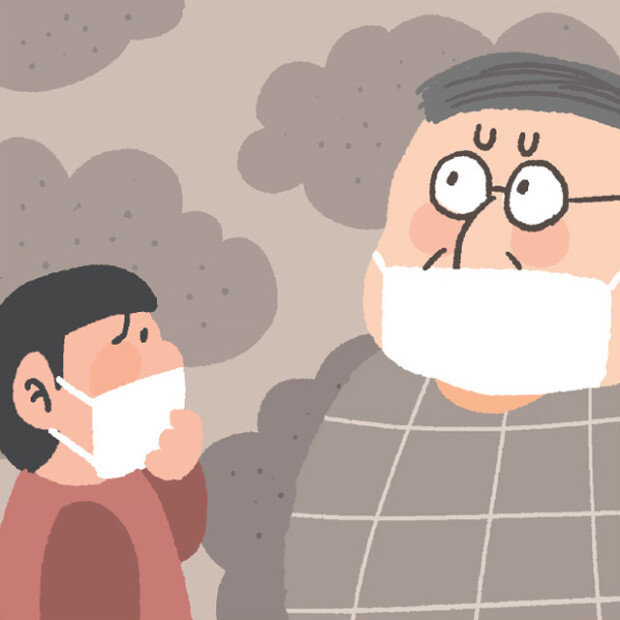Fine particles and COVID-19
Fine particles and COVID-19
Posted February. 22, 2020 07:53,
Updated February. 22, 2020 07:53

Once upon a time, there was an old lady. She had two sons, and one was a straw shoes seller and the other a wooden shoes seller. She worried that the son selling wooden shoes would go home empty-handed on sunny days, and worried for the other son on rainy days. “At least one of your sons earn money while the other does not,” someone says. The world is reeling from COVID-19. U.N. Secretary-General Antonio Guterres said, “The risks are enormous and we need to be prepared worldwide for that.” Indeed, the risk of the virus is really high. More than 80,000 have been confirmed to have the virus and more than 2,000 have died. COVID-19 cases keep rising in Korea as well.
Patients with underlying diseases or at an old age are a lot more likely to die from the novel coronavirus fro China. The Chinese Center for Disease Control and Prevention announced the result of an inspection on 44,672 cases confirmed as of February 11. The fatality rate of patients over 80 was 14.8 percent, patients in their 70s was 8.0 percent, 60s 3.6 percent, 50s 1.3 percent, 40s 0.4 percent, and those aged from 10 to 39 had the fatality rate of 0.2 percent. The fatality rates are proportional to the age of patients. Surprisingly, there was no death from patients under nine.
Children are more vulnerable to diseases because their immune system is not as strong as adults. Then why is that there is no death in children? According to the report of Kun-ling Shen’s team at Beijing Children’s Hospital, there were only 28 cases of pediatric infection among 45,000 cases and they had minor symptoms. The reason for this is to be unveiled after an epidemiological survey. Another characteristic of COVID-19 is that men are more vulnerable to it than women. Male patients’ fatality rate was 60 percent higher than female patients according to the Chinese medical authorities. Children and women are more resilient to the virus.
Interestingly, the opposite is true when it comes to fine particles. Children and women who are less vulnerable to COVID-19 are a lot more vulnerable to fine particles. Professor Kim Woo-jin at Kangwon National University said fine dust has a greater impact on children’s lung function than adults. The National Medical Center’s research team led by senior researcher Park Yoon-sook found that more children were hospitalized when the level of ultra-fine particles in the air increased. Fine particles provoke and aggravate childhood asthma. The U.S. Environmental Protection Agency makes efforts to protect children from fine particles through the “school flag” program. A joint study of China and Australia found that infants and toddlers had a higher incidence of autism when they were exposed to fine particles for a long time. Women are more vulnerable to fine dust than men, especially pregnant women. Research of Kyung Hee University’s Medical School found that pregnant women who lived in areas with higher fine dust concentrations had higher possibility of giving premature birth. A study of Ewha University’s Medical School also found than exposure to fine dust increased the risk of birth defects. Both fine particles and COVID-19 are threatening Koreans. Should I look on the bright side and say my child and wife are more resilient to COVID-19 and I am more resilient to fine particles?
tjdrud0306@donga.com
Headline News
- Korean president faces debate limitations unlike U.S. counterpart
- KEPCO's first quarter profits failed to meet market expectations
- Teenagers are left out of discussions about national pension
- 2 consultative bodies submit minutes regarding increasing number of medical students
- Woo Sang-hyuk's rivalry and friendship transcend borders







